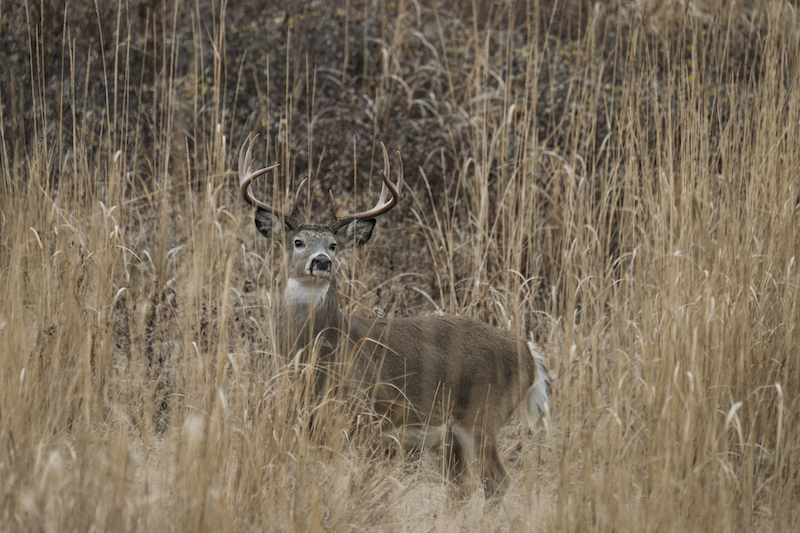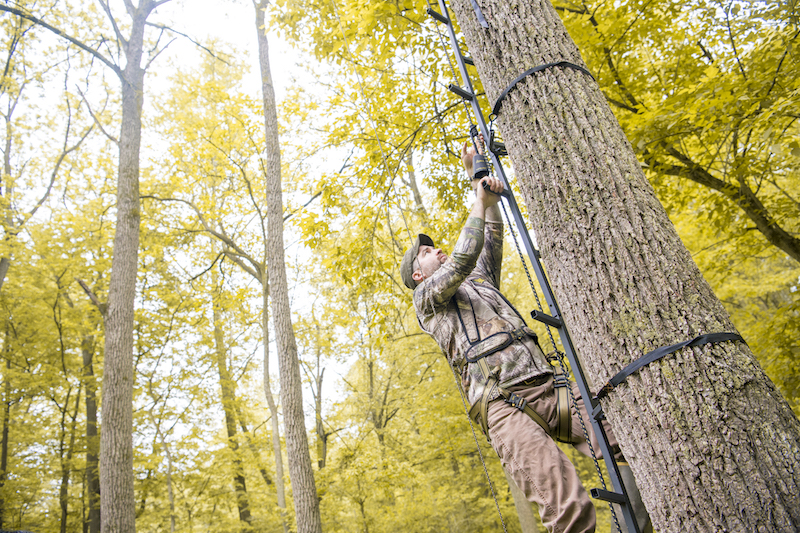So, you want to shoot your first deer with archery equipment. That’s a great goal, because all 50 states have at least one deer species.
White-tailed deer are hunted more than any other big-game animal in North America because of their great numbers and widespread range, but muleys and black-tailed deer also offer great hunting. If you’re looking to use your bow to notch your first deer tag, follow these nine steps to success.
The first step to harvesting a deer is ensuring you do it legally. Look up the rules where you plan to hunt, and buy a hunting license and deer tag. Some states might require you to apply for a license, so learn the application deadline and file early.
Review the season dates. Many states offer archery-only seasons before and/or after firearms season. You can find season dates and licensing information in the state’s hunting regulations booklet. Archery shops usually carry paper copies, and the information is also online.

Deer have an incredible sense of smell. Make sure your scent is always covered. Photo Credit: John Hafner
Once that tag is in your pocket, the fun begins. If you’ve never hunted deer, learn their habits and characteristics. Whitetails have an amazing sense of smell, which is their best defense against predators. A deer’s brain quickly interprets the faintest scents. The best way to defeat their nose is to position yourself downwind of them whenever possible. That ensures your scent blows harmlessly away. Also wear rubber boots, apply scent-killing sprays, and wear scent-blocking clothes to reduce odors.
A deer’s hearing and eyesight aren’t as impressive as their olfactory senses, but they’ll bust you if you’re careless. A deer’s ears swivel independently like turrets, capturing sounds from every direction and pinpointing their source. Avoid snapping sticks and banging your bow or other equipment. Foreign sounds can give you away.
A deer’s eyes excel in low light, and they have excellent peripheral vision. Many hunters use treestands to help hide, but even then it’s important to draw your bow only when the deer looks away or has its view blocked.
Public and private lands offer great deer hunting options. Public lands are open to everyone for free. Study national forests and wildlife refuges, state and county forests, and wildlife-management areas in your region. For more information, read “8 Tips for Public-Land Hunts.”
You need permission to hunt private land. You can request landowner permission, lease an area, or join a hunting club. If you find an area you’d like to hunt, seek permission as early as possible. Call and knock on doors a few months before hunting season. Introduce yourself and your hunting partners, and tell the landowner about your vehicle. Show and voice respect for their property, and offer to repair fences, pick up trash, and clear brush or fallen trees from fields or woodland roads. Read these tips on how to approach landowners for permission.
Once you know the general area you’ll hunt, start narrowing it down. White-tailed deer live in nearly every state because they’re adaptable and thrive in urban and wilderness environments. Still, they need food, water and shelter, just like all animals. Study topographic maps and identify potential deer habitat. Look for areas with shelter, water and young forest regrowth caused by fires, wind and clearcuts. Creek bottoms, especially in Western habitats, provide cover and make excellent travel corridors.
Preseason boots-on-the-ground scouting is the best way to find hotspots. Look for deer sign like beds, scat, tracks, scrapes and trails. Mark the sign with a GPS unit or smartphone. For more detailed information on scouting read “Whitetail Hot Spots to Scout for Deer Season.”

Set up your treestands early so that you can go right to them when hunting season starts. Photo credit: ATA
Trail cameras also help gather information about animals. Once you identify potential hunting spots, hang trail cameras for further investigation. Be sure to check the state’s regulations for possible restrictions on cameras.
If you get deer pictures, consider hanging a treestand before hunting season. Treestands help conceal bowhunters and reduce their chances of being scented. Some styles of treestands are more suitable than others for different situations. Archery shops usually carry a few models, and their pros can help you find the right one.
Most bowhunters position stands 15 to 20 yards from where they expect deer to show up. The goal is to be far enough away to stay hidden, but close enough to make good shots. Ground blinds are also great options for hunting deer, but some hunters choose the spot-and-stalk method, especially when hunting mule deer.
Bowhunting deer requires basic equipment like a bow, arrows and broadheads. You also want a rangefinder to pinpoint shooting distances, and camouflage clothing to help you blend in. Deer seasons run from late summer to early winter, depending on your area. Make sure you dress accordingly, especially if you’re sitting in a treestand. Nothing ends a hunt faster than getting wet, overheating or shivering from the cold.
Wash your clothes with scent-killing detergents, and spray yourself with scent-blocking products before heading afield. Carry binoculars and a backpack witha GPS, water, snacks, headlamp, toilet paper, first-aid kit, field-dressing kit, and hunting license/tags. Some hunters also carry calls and rattling antlers.
Make sure you go afield confident in your shooting abilities. Practice as much as possible beforehand. If you hunt from treestands, practice shooting from elevated positions. You also must understand shot placement. For details on where to aim, read “Bowhunting How-To: Where to Aim on a Whitetail Deer.”
After you’ve done all the prep work and deer season arrives, hunt hard and hunt often.Deer move most at dusk and dawn, so arrive at your spot an hour before you expect deer to appear. Enter the area as silently as possible, and downwind from where you believe deer to be. Be patient and persistent. Your hard work will eventually pay off.
Harvesting a deer is an amazing experience, and rewards you with meat. “Field dressing” a deer means removing the animal’s internal organs to prevent meat spoilage. It’s a job anyone can do. All you need is a sharp knife and latex gloves. If you’re nervous, call an experienced friend or family member to help. For some field-dressing tips read “Pep Talk: Yes, YOU can Field Dress a Deer” and “How-To: Field Dress a Deer in 10 Steps.”
Deer hunting takes commitment, hard work and a little luck. But if you stick to it, you’ll be rewarded with endless stories and tasty meals to share for years to come.